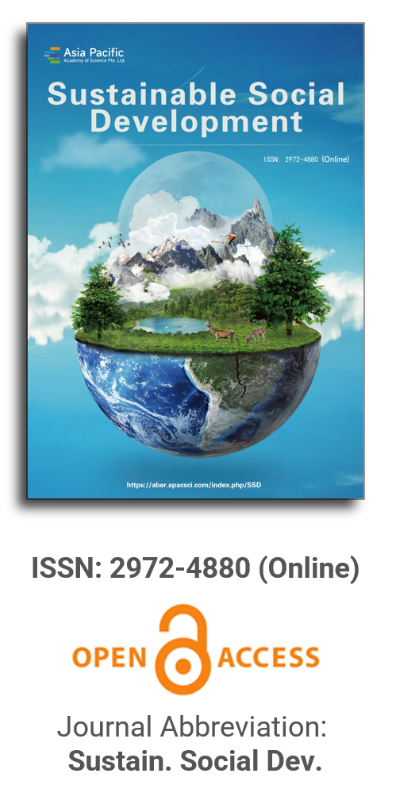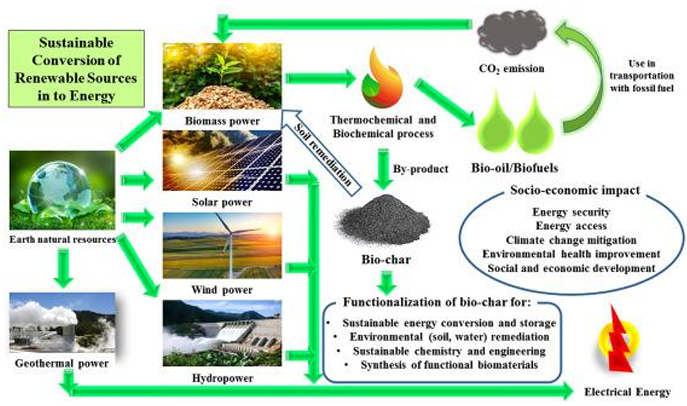
Asia Pacific Academy of Science Pte. Ltd. (APACSCI) specializes in international journal publishing. APACSCI adopts the open access publishing model and provides an important communication bridge for academic groups whose interest fields include engineering, technology, medicine, computer, mathematics, agriculture and forestry, and environment.

Digital literacies as policy catalysts of social innovation and socio-economic transformation: Interpretive analysis from Singapore and the UAE
Vol 1, Issue 1, 2023
Download PDF
Abstract
Even before the COVID-19 global pandemic, the world saw the adoption and proliferation of numerous digital tools and technologies, or a global digital transformation. This paved the way for digital inclusion, particularly through e-commerce and shared services platforms which helped to reduce barriers to entry and created abundant socio-economic opportunities across income groups. As a result, digital literacy becomes a vital aspect of modern life due to the rapid global shift toward this digital transformation. Numerous scholars have investigated the benefits of digital literacies since 1995. The primary objective of this paper is to investigate good practices and lessons learned on how digital literacy may serve as a policy instrument for social innovation and socio-economic transformations. The empirical approach is interpretive, through an understanding of digital literacy categorized into three primary pillars: (i) the evolution and foundational concepts of digital literacy, (ii) frameworks and measures of digital literacy, and (iii) the capacity and skills associated with digital literacy. The paper also examines how digital literacy capacity and skills shape social innovation initiatives in Singapore and the UAE, impacting the socio-economic transformation of individuals, families, and communities. Our interpretive approach from field observations and policy implementation, offers a multi-dimensional perspective on digital literacy research, and its socio-economic impact on people and communities. These insights can assist researchers new to this field to gain a more thorough understanding of digital literacy’s broad ecosystem and its extensive impact on communities and nations as a key driver of socio-economic change.
Keywords
References
1. Lanham RA. Digital literacy. Scientific American 1995; 273(3): 198–199.
2. Sharma R, Fantin AR, Prabhu N, et al. Digital literacy and knowledge societies: A grounded theory investigation of sustainable development. Telecommunications Policy 2016; 40(7): 628–643.
3. Gilster P. Digital Literacy. Wiley Computer Pub; 1997.
4. Rassool N. Literacy for Sustainable Development in the Age of Information. Multilingual Matters; 1999.
5. Sharma RS, Malone LG, Guan C, Dattakumar A. A maturity model for digital literacies and sustainable development. In: Encyclopedia of Information Science and Technology, 4th ed. IGI Global; 2018. pp. 2280–2291.
6. Eshet Y. Digital literacy: A conceptual framework for survival skills in the digital era. Journal of Educational Multimedia and Hypermedia 2004; 13(1): 93–106.
7. Martin A. Digital literacy and the “digital society”. Digital Literacies: Concepts, Policies and Practices 2008; 30: 151–176.
8. Tornero JMP. Promoting Digital Literacy. Gabinete de Comunicación y Educación; 2004.
9. Bélisle C. Literacy and the digital knowledge revolution. In: Digital Literacies for Learning. Cambridge University Press; 2006. pp. 51–67.
10. Bent M, Stubbings R (editors). The SCONUL seven pillars of information literacy core model for higher education. Available online: https://www.sconul.ac.uk/sites/default/files/documents/coremodel.pdf (accessed on 14 August 2023).
11. Bawden D. Origins and concepts of digital literacy. Digital Literacies: Concepts, Policies and Practices 2008; 30: 17–32.
12. Sharma RS, Samuel EM, Ng EWJ. Beyond the digital divide: Policy analysis for knowledge societies. Journal of Knowledge Management 2009; 13(5): 373–386.
13. Sharma R, Boon CY, Lim S. A vision for a knowledge society and learning nation: The role of a national library system. The Icfai University Journal of Knowledge Management 2009; 7(5): 91–113.
14. Lévy P. Collective Intelligence: Mankind’s Emerging World in Cyberspace. Perseus Publishing; 1999.
15. Castells M. End of Millennium. Vol. III of The Information Age: Economy. Society, Culture. A John Wiley & Sons, Ltd.; 1998.
16. Castells M. The Rise of the Network Society. Blackwell Publishers; 2000.
17. Belshaw D. What is ‘Digital Literacy’? A Pragmatic Investigation. Durham University; 2012.
18. OECD. Learning to Change: ICT in Schools. OECD; 2001.
19. Hoechmann M, DeWaard H. Mapping digital literacy policy and practice in the Canadian education landscape. Available online: https://mediasmarts.ca/sites/mediasmarts/files/publication-report/full/mapping-digital-literacy.pdf (accessed on 14 August 2020).
20. World communication/ICT indicators database. Available online: http://www.itu.int/en/ITU-D/Statistics/Pages/publications/wtid.aspx (accessed on 9 August 2023).
21. World development indicators. Available online: http://data.worldbank.org/data-catalog/world-development-indicators (accessed on 9 August 2023).
22. The digital economy & society index (DESI). Available online: https://ec.europa.eu/digital-single-market/en/desi (accessed on 9 August 2023).
23. Network readiness index. Available online: http://reports.weforum.org/global-information-technology-report-2015/network-readiness-index/ (accessed on 9 August 2023).
24. Global innovation index. Available online: https://www.globalinnovationindex.org/content/page/GII-Home (accessed on 9 August 2023).
25. Students, computer and learning. Available online: http://www.oecd.org/edu/students-computers-and-learning-9789264239555-en.htm (accessed on 9 August 2023).
26. Chakravorti B, Tunnard C, Chaturvedi RS. Digital Planet: Readying for the Rise of the e-Consumer. The Fletcher School; 2014.
27. Sabbagh K, Friedrich R, El-Darwiche B, Singh M. Maximizing the Impact of Digitization. Booz & Company; 2012.
28. Sparks JR, Katz IR, Beile PM. Assessing digital information literacy in higher education: A review of existing frameworks and assessments with recommendations for next-generation assessment. ETS Research Report Series 2016; 2016(2): 1–33. doi: 10.1002/ets2.12118
29. Ferrari A. DIGCOMP: A framework for developing and understanding digital competence in Europe. Available online: http://digcomp.org.pl/wp-content/uploads/2016/07/DIGCOMP-1.0-2013.pdf (accessed on 9 August 2023).
30. Measuring the world’s digital natives. Available online: https://www.itu.int/en/ITU-D/Statistics/Documents/publications/mis2013/MIS2013_without_Annex_4.pdf (accessed on 9 August 2023).
31. van Deursen AJAM, Helsper EJ, Eynon R. Measuring digital skills: From digital skills to tangible outcomes project report. Available online: https://www.researchgate.net/publication/267037582_Measuring_Digital_skills_From_Digital_Skills_to_Tangible_Outcomes_project_report (accessed on 25 August 2023).
32. Tengtrakul P, Peha JM. Does ICT in schools affect residential adoption and adult utilization outside schools? Telecommunications Policy 2013; 37(6–7): 540–562. doi: 10.1016/j.telpol.2013.01.002
33. Markauskaite L. Towards an integrated analytical framework of information and communications technology literacy: From intended to implemented and achieved dimensions. Information Research: An International Electronic Journal 2006; 11(3).
34. Moghaddam BK, Khatoon-Abadi A. Factors affecting ICT adoption among rural users: A case study of ICT center in Iran. Telecommunications Policy 2013; 37(11): 1083–1094. doi: 10.1016/j.telpol.2013.02.005
35. Hargittai E. Survey measures of web-oriented digital literacy. Social Science Computer Review 2005; 23(3): 371–379. doi: 10.1177/0894439305275911
36. Hargittai E. An update on survey measures of web-oriented digital literacy. Social Science Computer Review 2009; 27(1): 130–137. doi: 10.1177/0894439308318213
37. Dun S. Lost in digital translation? Testing web-based digital literacy assessment tools with Arabic speaking internet users. Arab World English Journal (AWEJ) Special Issue on CALL 2015; 6: 1–13. doi: 10.2139/ssrn.2843976
38. Teo T. An initial development and validation of a Digital Natives Assessment Scale (DNAS). Computers & Education 2013; 67: 51–57. doi: 10.1016/j.compedu.2013.02.012
39. Stoican OR, Stefanescu C, Stefanescu V. Teachers’ digital literacy training in preschool education. The International Scientific Conference eLearning and Software for Education 2015; 2: 322–327. doi: 10.12753/2066-026X-15-139
40. Shariman TPNT, Razak NA, Noor NF. Digital literacy competence for academic needs: An analysis of Malaysian students in three universities. Procedia-Social and Behavioral Sciences 2012; 69: 1489–1496. doi: 10.1016/j.sbspro.2012.12.090
41. Knutsson O, Blåsjö M, Hållsten S, Karlström P. Identifying different registers of digital literacy in virtual learning environments. The Internet and Higher Education 2012; 15(4): 237–246. doi: 10.1016/j.iheduc.2011.11.002
42. Reynolds R. Designing, defining for, and measuring “social constructivist digital literacy” development in learners: A proposed framework. Education Technology Research and Development 2016; 64(4): 735–762. doi: 10.1007/s11423-015-9423-4
43. Ching KL, Ching CC. Past is prologue: Teachers composing narratives about digital literacy. Computers and Composition 2012; 29(3): 205–220. doi: 10.1016/j.compcom.2012.05.001
44. Gui M. Formal and substantial Internet information skills: The role of socio-demographic differences on the possession of different components of digital literacy. First Monday 2007; 12(9): 1–16.
45. Piketty T. Capital in the Twenty-First Century. Harvard University Press; 2014.
46. Kaplan SN, Rauh J. It’s the market: The broad-based rise in the return to top talent. The Journal of Economic Perspectives 2013; 27(3): 35–56. doi: 10.1257/jep.27.3.35
47. Armenta Á, Serrano A, Cabrera M, Conte R. The new digital divide: The confluence of broadband penetration, sustainable development, technology adoption and community participation. Information Technology for Development 2012; 18(4): 345–353. doi: 10.1080/02681102.2011.625925
48. Ramírez R. Appreciating the contribution of broadband ICT with rural and remote communities: Stepping stones toward an alternative paradigm. The Information Society 2007; 23(2): 85–94. doi: 10.1080/01972240701224044
49. Morris DS, Morris JS. Digital inequality and participation in the political process real or imagined? Social Science Computer Review 2013; 31(5): 589–600. doi: 10.1177/0894439313489259
50. Hsieh JJPA, Rai A, Keil M. Addressing digital inequality for the socioeconomically disadvantaged through government initiatives: Forms of capital that affect ICT utilization. Information Systems Research 2011; 22(2): 233–253.
51. Shim KJ. After broadband infrastructure saturation: The impact of public investment on rural social capital. International Journal of Communication 2013; 7: 26–47.
52. Howard P. Digital citizenship in the afterschool space: Implications for education for sustainable development. Journal of Teacher Education for Sustainability 2015; 17(1): 23–34.
53. Hargittai E, Walejko G. The participation divide: Content creation and sharing in the digital age. Information, Community and Society 2008; 11(2): 239–256. doi: 10.1080/13691180801946150
54. van Deursen AJAM, van Dijk JAGM, ten Klooster PM. Increasing inequalities in what we do online: A longitudinal cross-sectional analysis of Internet activities among the Dutch population (2010 to 2013) over gender, age, education, and income. Telematics and Informatics 2015; 32(2): 259–272. doi: 10.1016/j.tele.2014.09.003
55. Loo BPY, Ngan YL. Developing mobile telecommunications to narrow digital divide in developing countries? Some lessons from China. Telecommunications Policy 2012; 36(10–11): 888–900. doi: 10.1016/j.telpol.2012.07.015
56. Larson JF, Park J. From developmental to network state: Government restructuring and ICT-led innovation in Korea. Telecommunications Policy 2014; 38(4): 344–359. doi: 10.1016/j.telpol.2013.10.001
57. Mokhtar IA, Ibrahim Y. Community awareness and leadership among Singapore youths in a COVID-19 landscape. In: Hai-Jew S (editor). Handbook of Research on Perspectives on Revisioning and Reconstructing Higher Education After Global Crises. IGI Global Publishing; 2023. pp. 186–203.
58. Cho MH, Yi CG. Adaptive social innovation derived from digital economy and its impact on society and Policy. Sustainability 2022; 14(6): 3408. doi: 10.3390/su14063408
59. Dionisio M, de Souza Junior SJ, Paula F, et al. The role of digital social innovations to address SDGs: A systematic review. The Journal of High Technology Management Research 2023; 34(1): 100442. doi: 10.1016/j.hitech.2022.100442
60. Nagy S, Somosi MV. The relationship between social innovation and digital economy and society. Regional Statistics 2022; 12(2): 1–27. doi: 10.15196/RS120202
61. Economic Commission for Latin America and the Caribbean (ECLAC). Digital Technologies for a New Future. Economic Commission for Latin America and the Caribbean (ECLAC); 2021.
62. Millard J, Fucci V. The role of social innovation in tackling global poverty and vulnerability. Frontiers in Sociology 2023; 8. doi: 10.3389/fsoc.2023.966918
63. Walsham G. Interpretive case studies in IS research: Nature and method. European Journal of Information Systems 1995; 4(2): 74–81. doi: 10.1057/ejis.1995.9
64. Walsham G. Doing interpretive research. European Journal of Information Systems 2006; 15(3): 320–330. doi: 10.1057/palgrave.ejis.3000589
65. Kwek T. How Singapore’s youth are changing the social sector by going beyond volunteerism. Available online: https://www.todayonline.com/commentary/how-singapores-youth-are-changing-social-sector-going-beyond-volunteerism (accessed on 9 August 2023).
66. Zhuo T. Not just ‘snowflakes’: Millennials are changing the face of civil society. Available online: https://www.straitstimes.com/lifestyle/not-just-snowflakes-millennials-are-changing-the-face-of-civil-society (accessed on 9 August 2023).
67. SIT. Enabling more persons with disabilities for jobs in technology industry. Available online: https://www.singaporetech.edu.sg/sitizen-buzz/project-dust/ (accessed on 9 August 2023).
68. Engineering Good. Computers against COVID. Available online: https://engineeringgood.org/digital-inclusion/cac/ (accessed on 9 August 2023).
69. Baharudin H. New office to drive digitalisation nationwide and reach out to seniors, hawkers. Available online: https://www.straitstimes.com/singapore/new-sg-digital-office-to-encourage-digitalisation-among-seniors-and-hawkers (accessed on 9 August 2023).
70. Low D. More than 190,000 seniors trained in basic digital skills under govt programme. Available online: https://www.straitstimes.com/singapore/politics/more-than-190000-seniors-trained-in-basic-digital-skills-under-govt-programme (accessed on 9 August 2023).
71. Yeo SH, Lim J. Some scam types see more seniors falling prey to them. Available online: https://www.straitstimes.com/singapore/courts-crime/some-scam-types-seeing-more-seniors-falling-prey-to-them (accessed on 9 August 2023).
72. Telecommunications and Digital Government Regulatory Authority. Information and services. Available online: https://u.ae/en/information-and-services#/ (accessed on 9 August 2023).
73. Federal Authority for Government Human Resources. FAHR launches Massar Programme in Abu Dhabi. Available online: https://www.fahr.gov.ae/Portal/en/news/31/1/2011/fahr-launches-massar-programme-in-abu-dhabi.aspx (accessed on 9 August 2023).
74. MENA Herald. UAE women entrepreneurs respond overwhelmingly to Sharjah Tatweer Forum’s support programs. Available online: https://www.menaherald.com/en/business/events-services/uae-women-entrepreneurs-respond-overwhelmingly-sharjah-tatweer-forum%E2%80%99s (accessed on 9 August 2023).
75. Department of Community Development. About Ma’an. Available online: https://maan.gov.ae/about/ (accessed on 9 August 2023).
76. Smart Nation and Digital Government Office. Transforming Singapore through technology. Available online: https://www.smartnation.gov.sg/about-smart-nation/transforming-singapore/ (accessed on 9 August 2023).
77. Exponential Digital Solutions. The UAE digital government strategy 2025: A path to digital transformation. Available online: https://10xds.com/news/uae-digital-government-strategy/ (accessed on 9 August 2023).
78. IMD. IMD smart city index 2023. Available online: https://www.imd.org/smart-city-observatory/home (accessed on 9 August 2023).
79. The Digital Economy & Society Index (DESI). Available online: https://digital-strategy.ec.europa.eu/en/policies/desi (accessed on 9 August 2023).
Supporting Agencies
12312312312312
Copyright (c) 2023 Ravi S. Sharma, Intan Azura Mokhtar, Dhanjoo N. Ghista, Amril Nazir, Sana Z. Khan
License URL: https://creativecommons.org/licenses/by/4.0

This site is licensed under a Creative Commons Attribution 4.0 International License (CC BY 4.0).

Prof. Kittisak Jermsittiparsert
University of City Island, Cyprus





It is with deep regret that we announce the cancellation of the Forum on Sustainable Social Development & Computing and Artificial Intelligence, originally scheduled for June 15, 2025.

